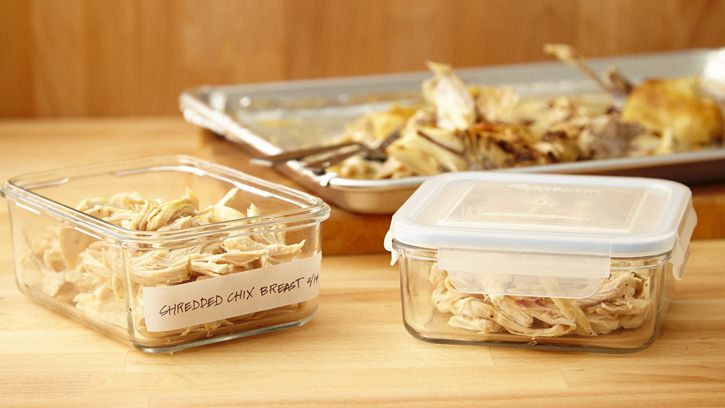How to Properly Store Food for the Freezer

We get it — taking extra time to unwrap and rewrap food for the freezer after a long grocery trip can be a pain. But you’ll be glad you did it when you’re not forced to cook an entire package of chicken breasts that have all frozen together, when all you wanted was one or two pieces.
Below are some tips on how to store food in the freezer to prevent freezer burn, moisture loss and food poisoning and to protect the food you buy.
Tip #1: If you do not plan on using the frozen meat you bought within a month, you’ll need to repackage it. The Styrofoam package it comes in is not ideal for long-term freezing, as it won’t hold up well to the freezer temperatures.
Tip #2: Don’t freeze food that is nearing an expiration date. Popping it in the freezer won’t magically make it edible again — in fact, it will come out worse than before, and you’ll probably throw it out anyway.
Tip #3: When repackaging meat to freeze, separate into smaller serving sizes for ground beef or into individual pieces for chicken and like items. Be sure to wrap each portion tightly with aluminum foil or plastic wrap and then seal it in a container or gallon-sized, plastic zip bag.
Tip #4: When sealing containers or plastic bags, make sure you leave as little air as possible. Using a vacuum sealer on plastic bags is ideal if you have access to one. If you’re using containers, use smaller ones so that the food takes up more space and there is not a lot of room for bacteria to grow. However, don’t fill your containers to the brim, as the food inside could expand and break through.
Tip #5: Plastic bags have the advantage over containers because they take up less space in the freezer and your food will freeze faster due to increased surface area.
Tip #6: Avoid glass containers, because they can expand and break when switching between temperatures, depending on the contents inside.
Tip #7: Don’t put hot foods in your freezer. Let hot dishes cool off first to avoid making your freezer work harder to cool them and to avoid raising the temperature inside for your already-frozen foods.

Tip #8: Label and date your frozen containers and bags when you’re finished to avoid eating food that has gone bad or lost it’s flavor.
Tip #9: Don’t pack your freezer too tightly— this isn’t a game of Tetris®. You’ll need ample air circulation to keep all of your foods in good condition.
Tip #10: Place newly wrapped foods in the coldest part of your freezer until they are completely frozen, so they can freeze quickly and avoid any bacteria growth.
Image credits: theKitchn.com, BettyCrocker.com
Kenmore
The Kenmore brand represents 100 years of trusted performance, backed by exclusive features and innovations that no other brand can bring to the table. We’re always evolving to ensure day-to-day tasks are taken care of with faster cooking, better cleaning and more living throughout the home.




